Hokkaido, Japan’s northernmost island, is justifiably famous for its beautiful scenery; the region’s mountains, lakes and rolling hills making it a huge draw for tourists, both in the relatively cool summer, and the powder snow blessed winter. But for all its natural splendour, even the most cursory of glances away from its famous sights brings a very different Hokkaido into view — one where abandoned and horribly decayed buildings liberally dot the landscape. Most of them are bankrupt businesses of all sizes and descriptions, along with a good few houses that have been long vacated, presumably due to death, or the former resident’s departure to a more prosperous area. And in many ways, this rather depressing, less documented aspect of Hokkaido, is encapsulated in the town of Muroran.
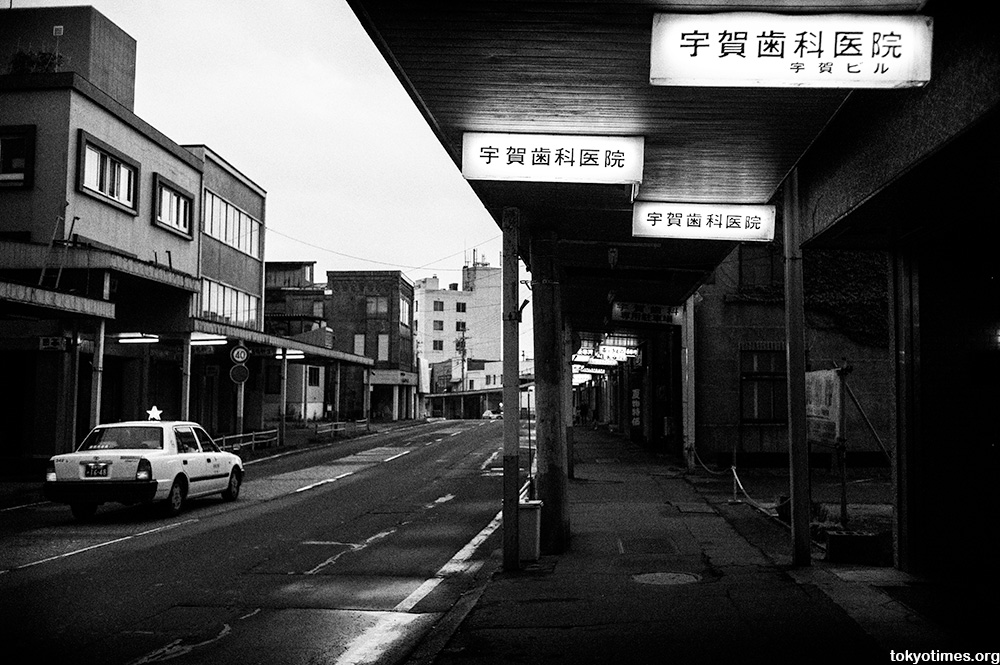
Like many industrial towns, it has suffered enormously over the years, particularly in the latter decades of the 20th century. The massive drop in population form 162,059 people at its peak in 1970, to 90,996 last year, amply highlighting Muroran’s long, irreversible decline.
However, while such figures spell out the hard facts, it’s walking Muroran’s streets that really exposes the town’s plight. In the shopping and entertainment area in particular, where people once bought the latest goods and enjoyed an evening out, there are now only dimly glowing signs. Almost mocking reminders of the past that now only act as street lights, as almost every single shop has been shuttered up — most of them for a good number of years.
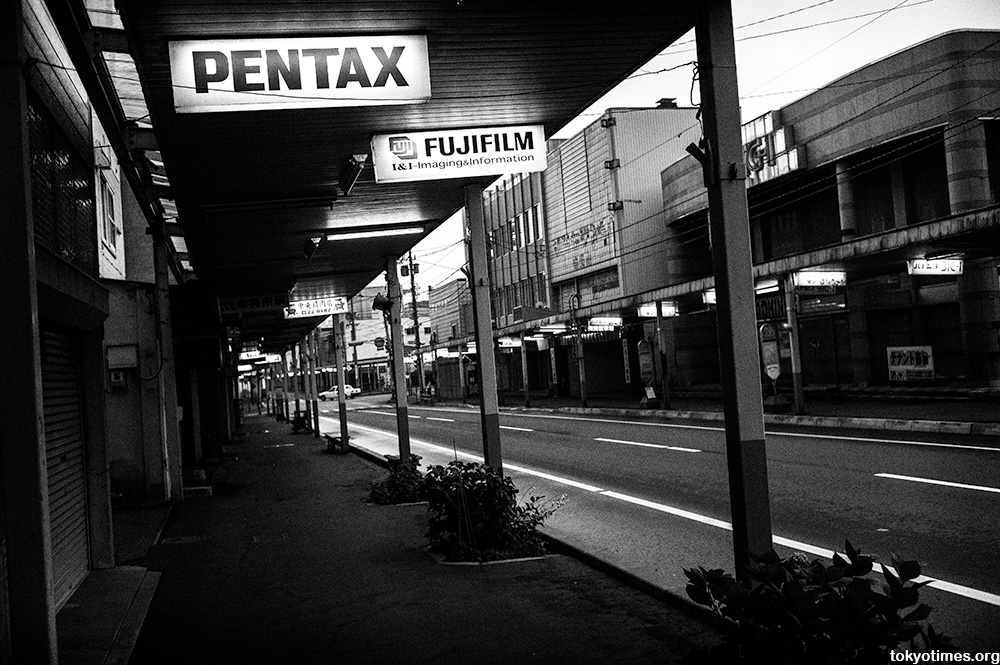
Tens of years in more than a few cases.
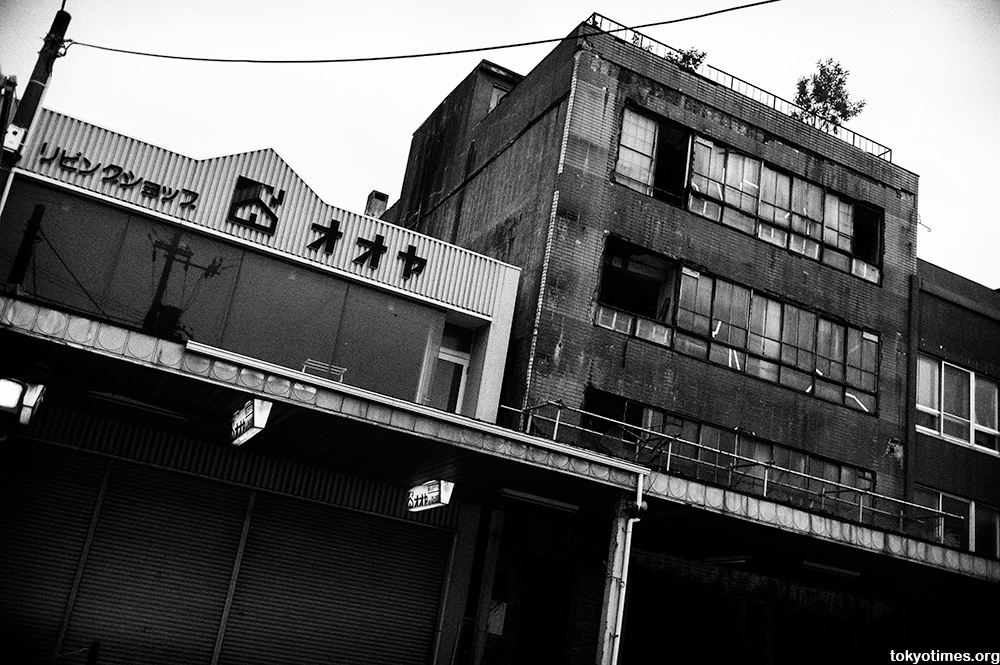
Leaving the streets eerily empty, save for the odd person. Some clearly with a purpose.
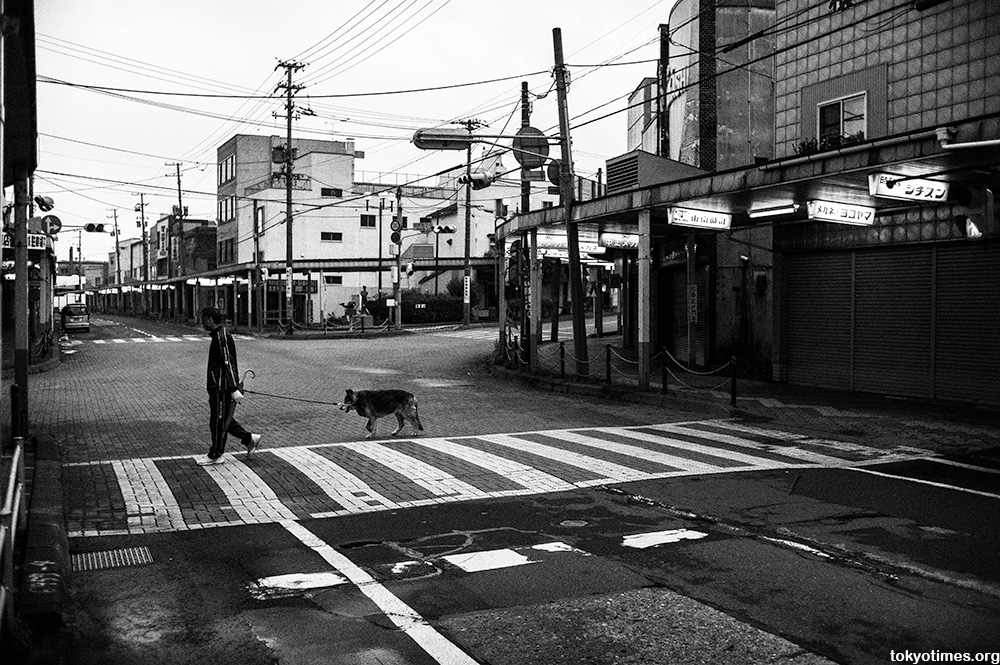
Or at least a destination.
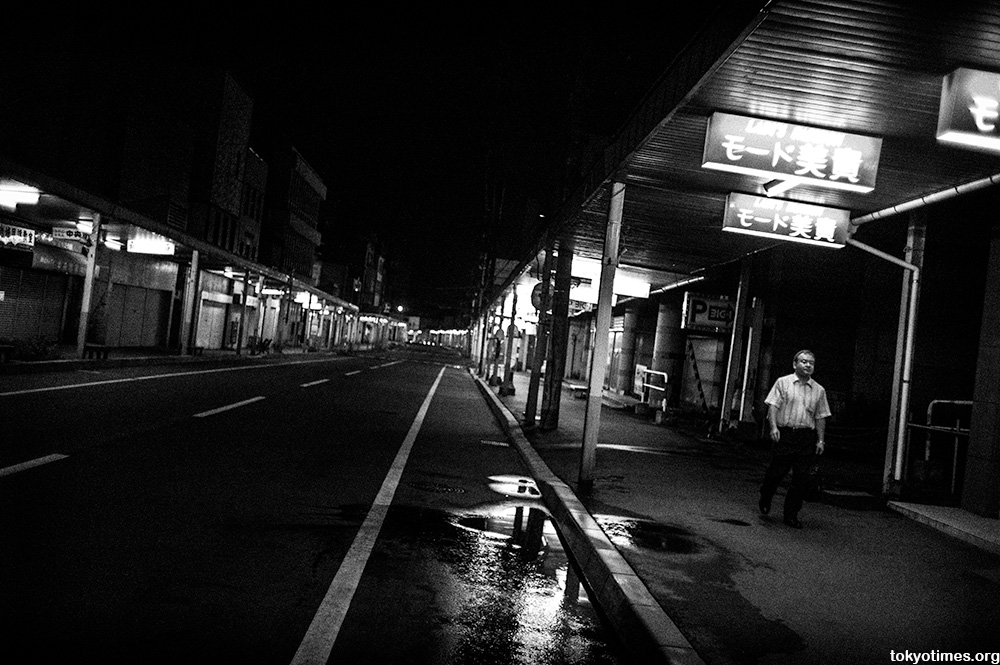
Others perhaps less so.
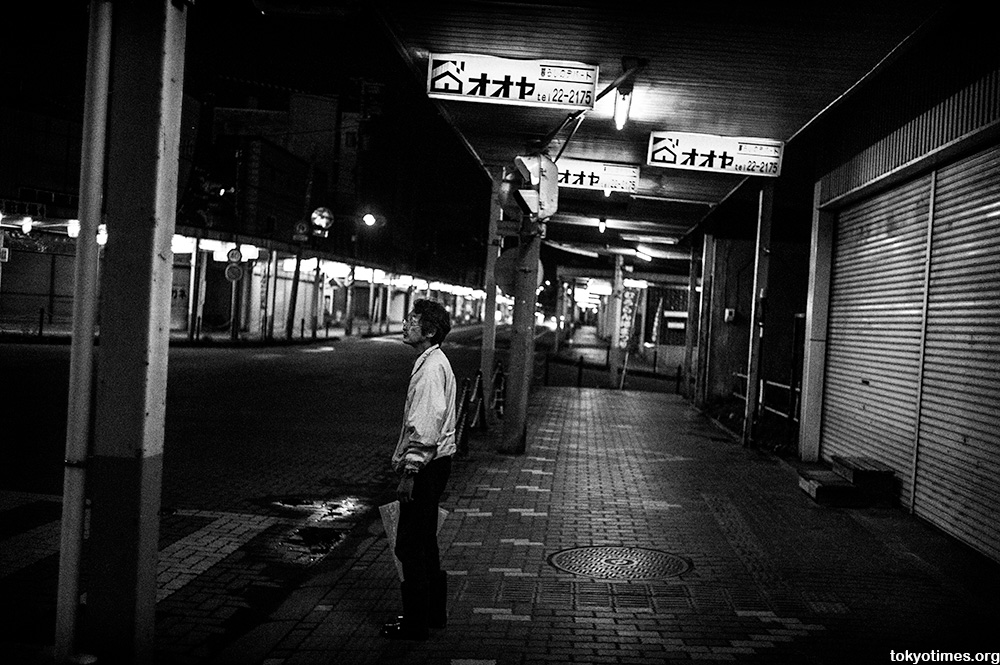
Plus this old lady who was sat, somewhat forlornly, outside a shop.
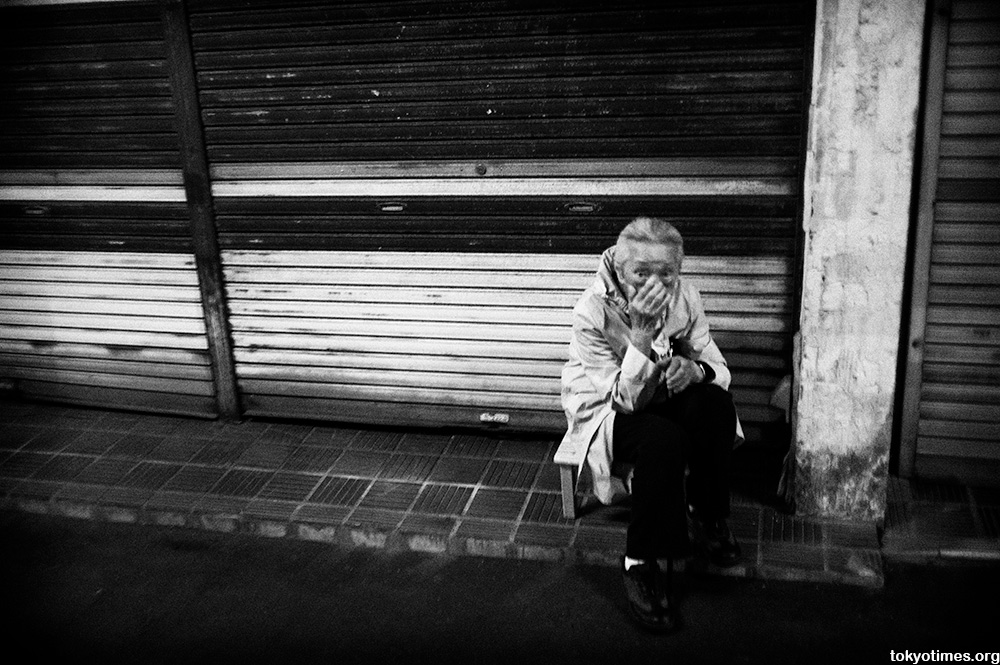
Why she was there is anybody’s guess, but in many ways she sums up Muroran’s sorry state — both now, and in the years to come.
Jordy Meow says
And still people have to wait for the crossing lights to turn green…
Lee says
I know. No traffic at all, but still he waited…
Marc Tobolski says
This is not unlike how America suffered in the late ’80s and early 90’s with their downtown areas dying and decaying. Only through rallying of civic pride and revitalization did many downtown areas survive. Many still struggle. Historic buildings were lost – historic businesses too. It is sad to see this happen.
Lee says
It is. Very. The people we met there were lovely too. Really warm and friendly. A real shame to see their home suffer so much.
Taki says
These pictures were very sad and lonely for me. I used to live in Hakodate and even though I’ve never spent much time in Muroran. I have passed through there several times
Lee says
It’s certainly a sad place. We didn’t get as far south as Hakodate, just Muroran. I was really surprised how rundown much of Hokkaido is. Especially away from the tourist spots. Clearly Japan’s slow decline has hit the region very hard…
Hans ter Horst says
Great stuff! The whole country appears to be contracting around the area from Osaka to a little north of Tokyo and I had noticed myself that the countryside is for old people, but your series really make it very visible!
Lee says
Cheers! Felt I managed to capture some of the sadness the place exudes.
It is. Increasingly obvious too, isn’t it? One really doesn’t have to go to far from Tokyo to see it as well. Makes you wonder what it’ll be like in the future…
June says
Wow, that’s really sad. Looks so lonely. And that old lady……
Lee says
Yeah, it was a sad sight. Particularly the old woman.
On a positive note, however, the people we met there were lovely, and a little restaurant/bar we found was great. Nice atmosphere and surprisingly busy.
Lyrica says
So sad. I lived in Muroran almost four years in my teenage. My family and I lived half way up Sokuryozan, the hill with communication antennas on top.
I went to high school there, and afterwards I got my first job there, working enormous overtime hours typing shipping documents..I left the city in 1969.
Many other cities in Hokkaido are dying, including Kushiro, my beloved hometown. I visited the city two years ago. Very little traffic on once-busy main street.
Vacant houses here and there, some still sporting hyosatsu with names that are still familiar. Both my elementary and middle schools had been long gone.
Yet, my childhood friends stil llive and work there. They all came out to throw a homecoming get-together for me. None of them looked unhappy.
They are very, very resilient people. I am very proud that I have the same resilience which I carried all the way across the ocean.
Still, it’s sad. These desolate scenes somehow reminded me of a ghost town half swallowed up encroaching desert which I saw whe I flew over
Arizona. Thanks for great photos!
Lee says
Not at all. Thanks for sharing your memories. Very interesting to hear fro somebody who lived there.
Yeah, it’s certainly not just Muroran that is suffering. In only a short time in Hokkaido I saw many abandoned buildings, as well as several quiet, lifeless towns and streets. But like you say, the people are reliant. Wonderfully friendly too.
Cik Luna says
yep…its really sad looking at this part of the town
kudos to tokyotimes.. we get to witness the different sides of Japan
the real life of people..
aside from the ultra modern image of tokyo prominently portrays all over the net
Lee says
Thanks! Glad you like the slightly different side of the country that I try to show. Places like this interest me far more than the modern, glitzy Japan, so good to hear other people feel the same.
David says
Increasingly this seems to be the norm across Japan and sadly it’s the regional centres that pay the largest cost. Last year I had the chance to visit Sado Island where the population has literally halved since the 1950’s and not only that, the number of annual visitors is on the decline. Driving around the Island what struck most noticeably was the absence of virtually anyone under the age of 60 and once these remaining folk pass on the future there will turn from bleak to downright depressing.
http://ridgelineimages.com/sightseeing/sado-island/
Lee says
It does. A sad state of affairs that is being played out all across Japan. One doesn’t have to get too far out of the cities either to see the difference. And with people still flocking to the cities, and the population getting ever older, it’s only going to get worse. Hard to imagine what the solution is either, if in fact there even is one…
Ami says
Why can’t they give this town to the previous inhabitants of Iwate and Fukushima?
The land is clean, there is infrastructure (That obviously needs work).
So many of them are still in temporary housing. It is long past time to give them a home.
Lee says
That’s an interesting point. There certainly is accommodation there. At least in parts of the town anyway. But then there’s the issue of jobs, family ties etc. Plus conceivably it’d probably cost more too. None of those possible problems, however, excuses the shockingly slow progress in helping those affected get their lives back on track…